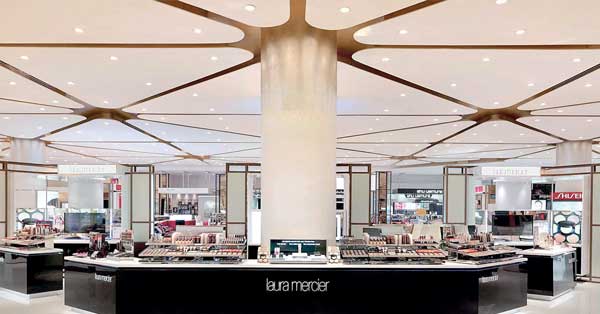10 Oct 2016 - {{hitsCtrl.values.hits}}

When it comes to the consumption of just about anything in our country today, the mass market is splintering. It used to be that you could make the same TV shows, with the same ads, pushing the same products and still attract a mass audience. Just as the middle-of-the-road market for  entertainment has splintered, so too have consumer markets in what many have dubbed the ‘hourglass’ economy. It’s real and that split
entertainment has splintered, so too have consumer markets in what many have dubbed the ‘hourglass’ economy. It’s real and that split
is accelerating.
If you are a retailer or a fast-moving packaged goods seller or even a home-builder, you can’t ignore or wish away the presence of the hourglass. Smart competitors are going to focus on tailoring what they do to the needs of the different segments. To win, you need to dig deeply into the specific behaviours that motivate customer groups.
Not the price
At the low end, is price really all that motivates a buyer? If that’s what you think, you’re highly unlikely to develop a winning strategy. The most salient thing about customers at the low end is that they don’t have a lot of surplus resources sitting around in inventory and they don’t have a lot of buffers in the event things go wrong.
Smart sellers are winning by figuring this out. One strategy they use might be called the ‘good things in small packages’ approach. And, if a shopper is just spending little bits of money at a time, they’re apt to visit more often and to be put off by crowds and long lines during those trips. They are also surprisingly willing to trade off tangible goods, like clothing, for intangible experiences that make them feel better, like connecting with others on cell phones.
But at the high end, the challenges are different. The first problem is that it is increasingly difficult to promote the lure of exclusivity. Not only are products for the high end remarkably similar to those which the low end can aspire to, but there are so many other high-end customers that the offers are commoditized. High-end customers, too, are driven in their shopping habits by behaviours but because they have more resources to act on their choices, it can be bewildering to try to navigate through them.
Three strategies
The first step is to understand that in the so-called high-end market, there are three possible strategies, luxury, fashion and premium. The difference between these three strategies is huge.
A. The luxury strategy aims at creating the highest brand value and pricing power by leveraging all intangible elements of singularity - i.e. time, heritage, country of origin, craftsmanship, man-made, small series, prestigious clients, etc.
B. The fashion strategy is a totally different business model: here, heritage and time are not important; fashion sells by being fashionable, which is to say, a very
perishable value.
C. The premium strategy can be summarized as ‘pay more, get more’. Here the goal is to prove – through comparisons and benchmarking – that this is the best value within its category. Quality/price ratio is the motto. This strategy is, by essence, comparative.
The luxury strategy was originally developed for the broadly defined luxury market and it is there that you can find it the most today as well. In fact, it’s the most efficient strategy in this market.
Luxury market
In consumer marketing, at the heart of every brand strategy, you will find the concept of positioning, of the unique selling proposition (USP). Every classic brand has to specify its positioning and then convey it through its products, its services, its price, its distribution and its communication. Positioning is the difference that creates the preference for a given brand, over the
competing brands.
When it comes to luxury, being unique is what counts, not any comparison with a competitor. Luxury is the expression of a taste, of a creative identity; luxury makes the bold statement ‘this is what I am’, not that depends – which is what positioning implies. It is identity that gives a brand that particularly powerful feeling of uniqueness, timelessness and the necessary authenticity that helps give an impression of permanence.
Such a brand has an identity but not a positioning. Identity is not divisible, it is not negotiable – it simply is. Luxury is superlative and not comparative. It prefers to be faithful to an identity rather than be always worrying about where it stands in relation to a competitor.
Value sets
Luxury has two value facets – luxury for oneself and luxury for others. To sustain the latter facet, it’s essential that there should be many more people that are familiar with the brand than those who could possibly afford to buy it for themselves. In traditional marketing, the keyword is return on investment. In advertising for example, the media plan must concentrate on the target consumers and nothing but the target consumers – every person reached beyond the target is a waste of investment money.
In luxury, if somebody is looking at somebody else and fails to recognize the brand, part of its value is lost. It is essential to spread brand awareness beyond the target group but in a very positive way – brand awareness is not enough in luxury; it has to be prestigious.
When you consider those principles, you see that they define a whole consistent and original marketing strategy – the luxury strategy. You also see that this strategy is not limited to the existing luxury market, although it is the place where it is the most relevant – hence its name. In spite of the theory – ‘Luxury sets the price, price does not set luxury’, the word ‘luxury’ does not appear in their expression. This means that the marketing strategy defined by those laws can be implemented beyond the luxury market.
For instance, Apple, which is not a luxury brand, has been immensely successful in applying the luxury strategy in the computer and phone market, where the pure luxury market is just a niche, even though it can be a beautiful one. In fact, the luxury strategy is often the best business model to make sustainable products or services profitable at the launch phase.
Identify the market
Clearly identify your low-end target market and understand the specific reasons why they’ll buy and use low-end products. Talk clearly and simply to those reasons, demonstrate how such products meet their needs, are affordable and yet offer the value sought. Your choice of language should be clear, simple and to the point but never talk down to your audience. Avoid
complex jargon.
Tailor your marketing to the specific places where your prospects will be most active, whether on social or in more traditional media. Appreciate that any SEO terms you use will need to match those they’re likely to use when searching; adding words such as value, savings and budget to your product or service descriptions.
For many companies, going downscale, have worked. When the BMW group saw the target marker for its flagship brand shrink, it introduced the mini -3 series. The target market for its 3 series has grown substantially. The 3 series buyers are typically younger and less affluent than BMW buyers, but they may become tomorrow’s BMW customers. In the same manner, Swiss watchmakers rejuvenated their entire industry with the introduction of the low-end Swatch.
The future belongs to brands, not companies. And to play the high-low game, you have to think brands first, company second.
(Lionel Wijesiri is a retired corporate director counting three decades of senior management experience. He is now an independent consultant and a freelance journalist. He may be contacted on [email protected])
10 Jan 2025 30 minute ago
10 Jan 2025 35 minute ago
10 Jan 2025 2 hours ago
10 Jan 2025 2 hours ago
10 Jan 2025 2 hours ago